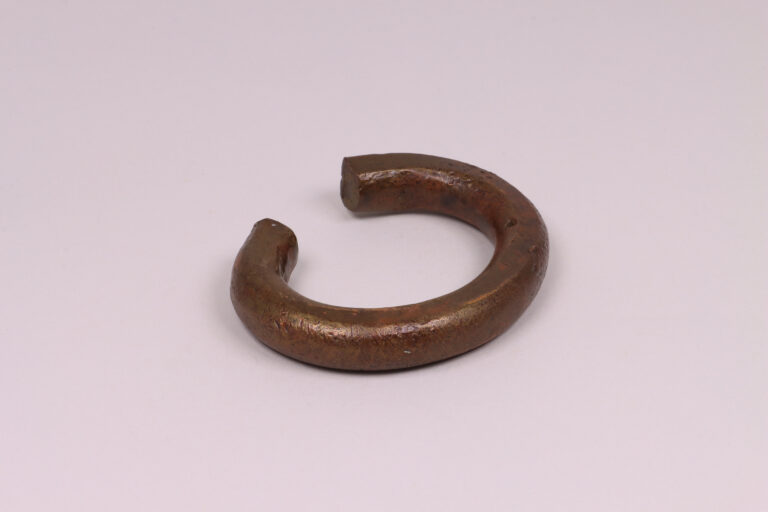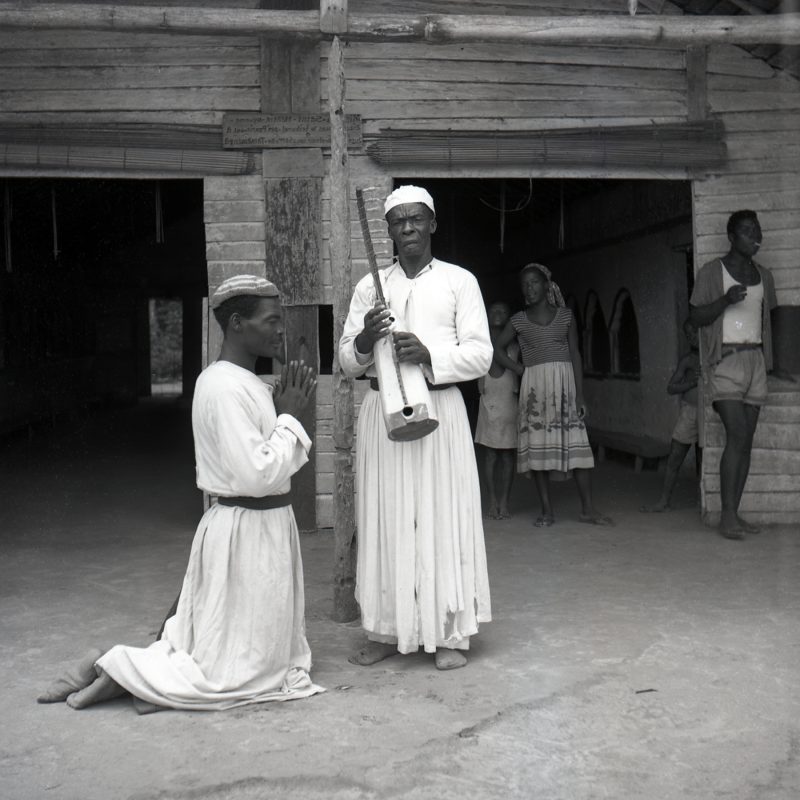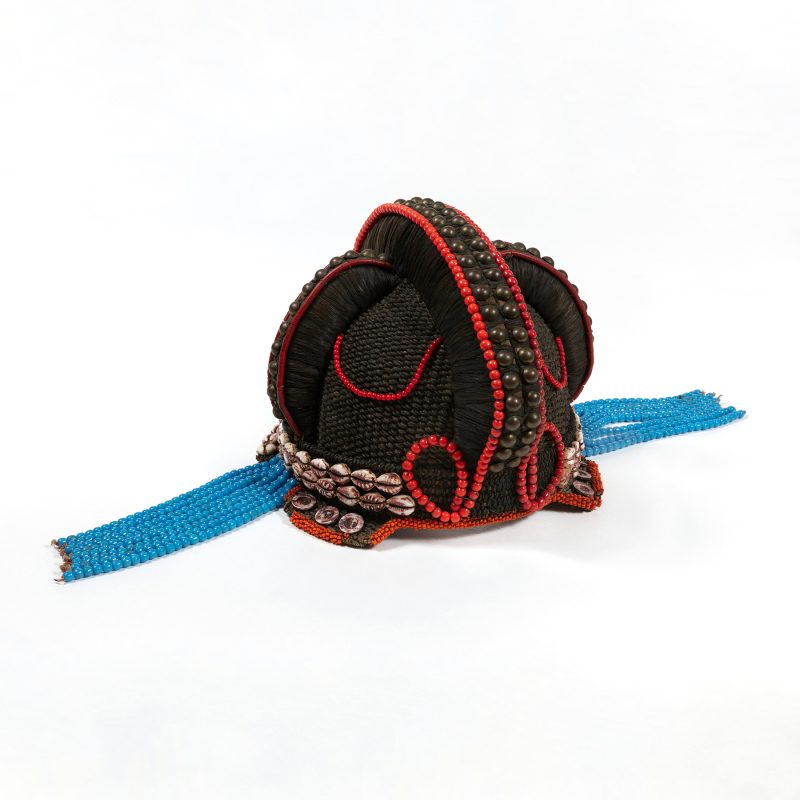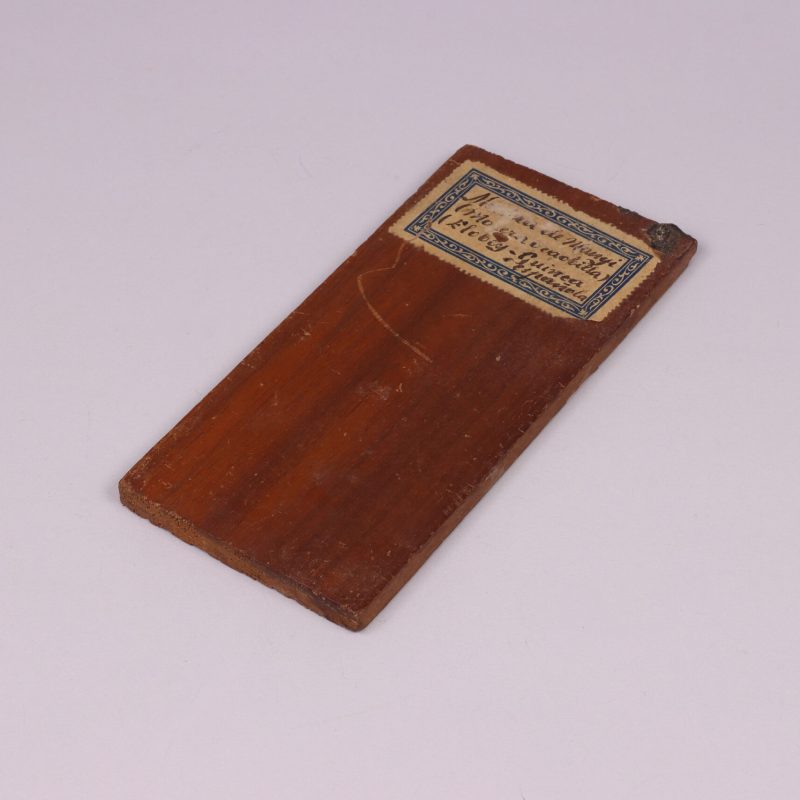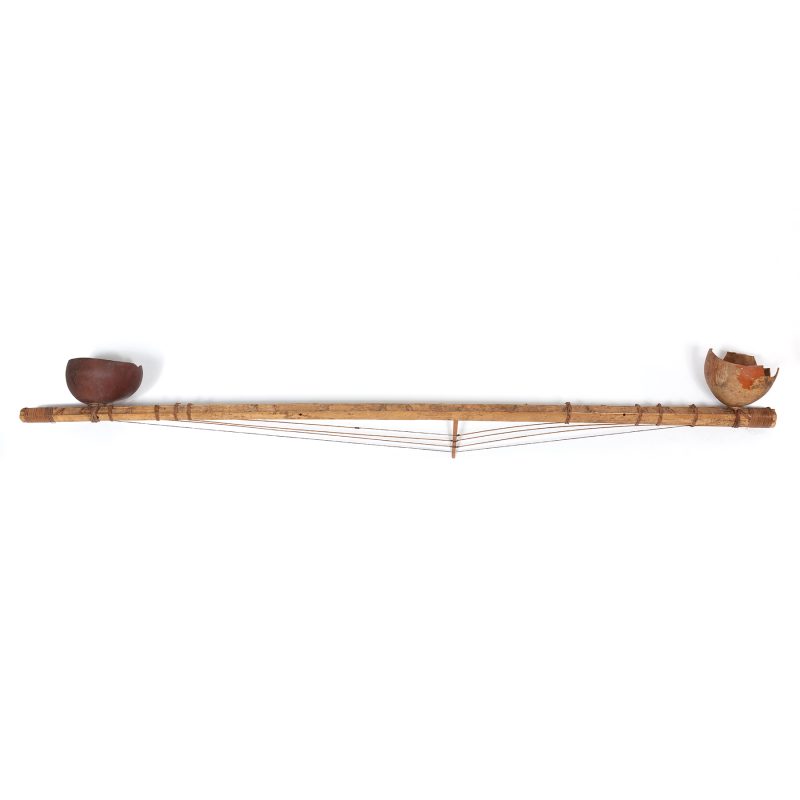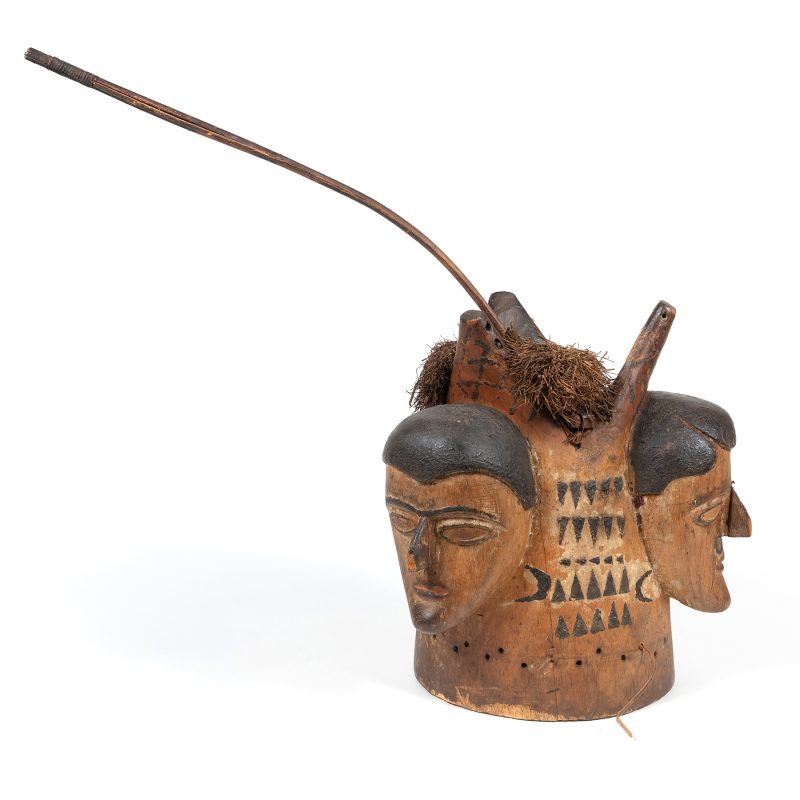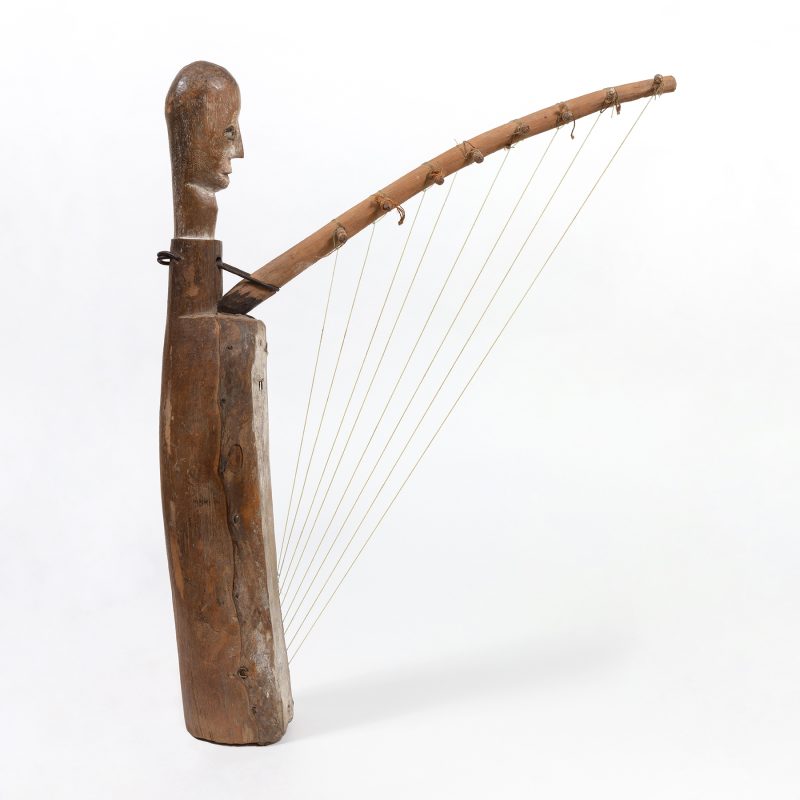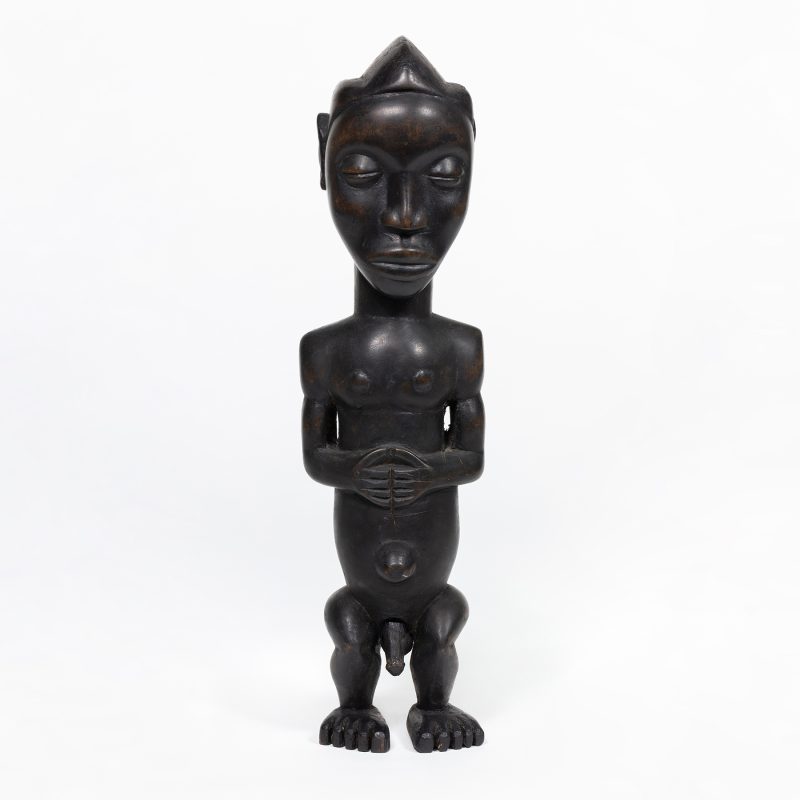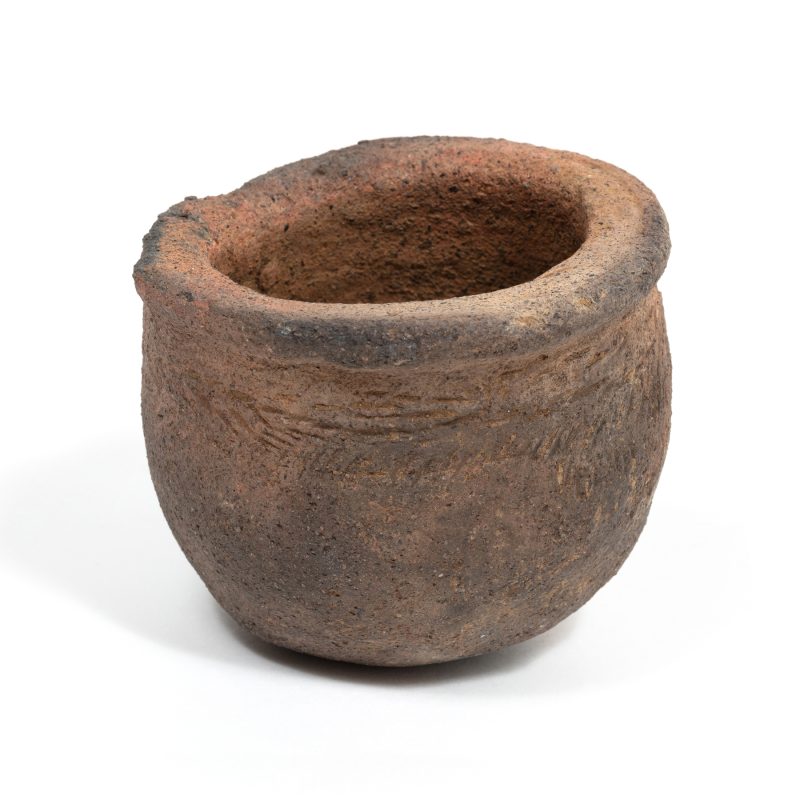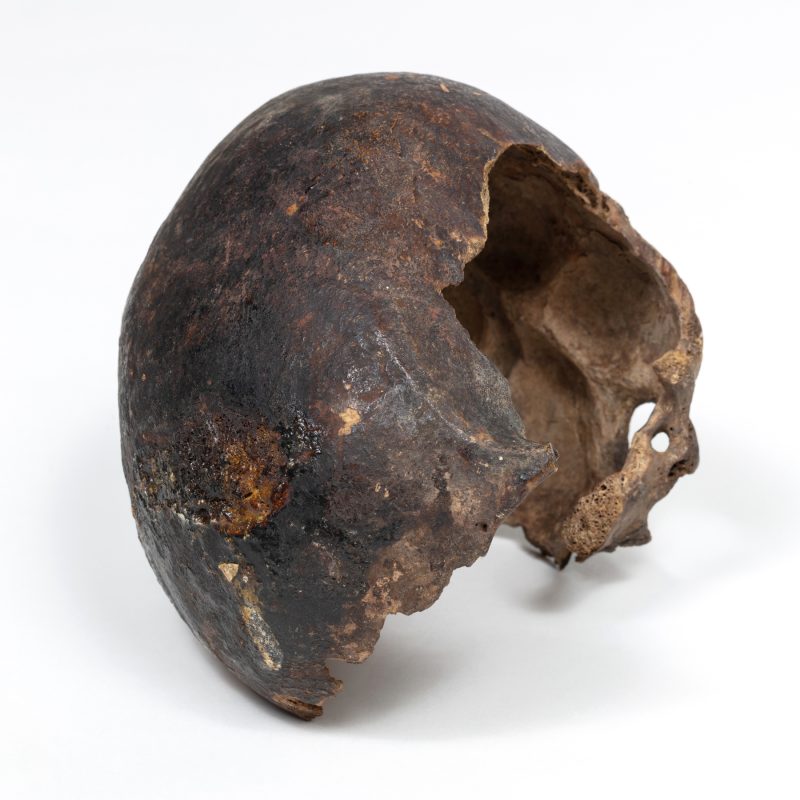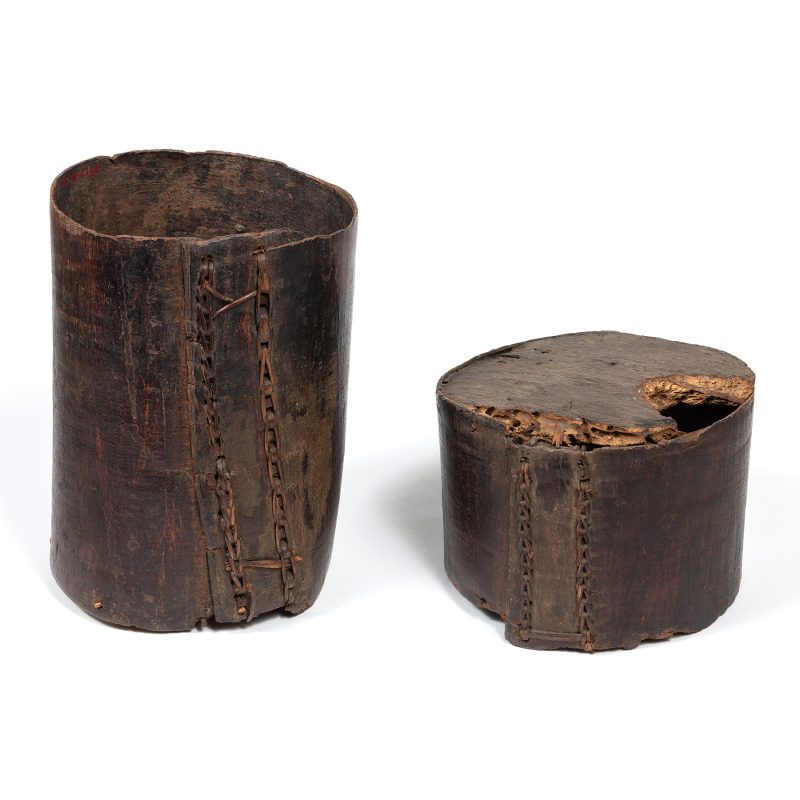Summary of results
This is a Fang bracelet—according to the museum’s inventories, an ‘anga-djó’, which translates as ‘jewellery used on legs and feet’ or ‘anklet’—acquired by Jordi Sabater Pi on 12 February 1957, as part of the first official expedition made by the Museo Etnológico y Colonial that same year. Bracelets were a type of bronze or brass coin that also came to be used as a decorative element. Emerging before the colonial period, they are open metal rings used by Europeans as a form of payment in trade with the local population. They were produced in Europe for the Portuguese trade in West Africa. Although they ceased to be used in the late 1940s, they are still used today as ornaments. This object was bought in the village of Abebeiñ (Ebebeyín, Equatorial Guinea) for six pesetas.
Chronological reconstruction of provenance
This is a bracelet acquired by Jordi Sabater Pi during the MEB expedition to the villages of Bebeiñ (Esseng clan) and Abebeiñ, in the Ebebeyín demarcation, in Equatorial Guinea, on 11 and 12 February 1957. It belongs to a batch of 26 pieces of Fang craftsmanship. This one, in particular, cost six pesetas and, according to the entry and exit book, was acquired on the 12th. Its original name, according to the museum, is ‘anga-djó’ (MEB_L128_02_03, MEB_L128_02_04 and MEB_L128_02_05). The piece was sent to the Museo Etnológico y Colonial in box 2, together with two other bracelets (MEB_L128_02_11).
Estimation of provenance
The bangle was acquired in the village of Abebeiñ, Ebebiyín (Equatorial Guinea).
Possible alternative classifications
No alternative classifications are apparent. It is recommended that the price (six pesetas) and the specific place of acquisition (Abebeiñ village, Ebebiyín) be stated, and that the name be changed to ‘coin’ instead of ‘jewel’.
Given the coincidence between the current reference number (19) and that of the old inventories carried out during the expeditions, it is quite likely that it is the same piece, although in these inventories there are inaccuracies regarding the name of the object. In the first inventory in which the piece appears, it is listed as ‘19 MVOT tormellera’ (MEB_L128_02_03), but the object has nothing to do with a mvot, which is a type of Fang necklace, but is instead a bracelet, a type of bronze or brass coin that was also used as a decorative element. Emerging before the colonial period, these are open metal rings used by Europeans as a means of payment in trade with the local population. These pieces were produced in Europe by the Portuguese trade in West Africa, and should not be confused with the jewellery (anklets, necklaces, bracelets…) manufactured in those regions (Denk, 2020). Although they ceased to be used in the late 1940s, they are still used today as ornaments. The original name used by the museum is ‘anga-djó’ (loosely translated as ‘anklets’ or with the description ‘jewellery used on legs and feet’), but it has not been established that it refers to this bracelet. It is therefore recommended that more precise information be included concerning the name and thus the uses and meanings of this type of object, which is nowadays very well documented.
Complementary sources
Archives:
MEB_L128_02_03. Referència: MEB (1957a). Notes etnològiques [Notes de camp]. Notes etnològiques i notes bibliogràfiques. Expedició Guinea (L128 02 03). Arxiu del Museu Etnològic.
MEB_L128_02_04. Referència: MEB (1957b). Relació de material etnològic adquirit durant l’expedició del Museu Etnològic i Colonial en els poblats de Bebeiñ (clan Esseng) i Abebeiñ (demarcació d’Ebebeyín, Guinea Continental), durant els dies 11 i 12 de febrer de 1957 [Inventari]. Relació de despeses i relació i valoració de peces (col·lecció 60). Justificants. Expedició Guinea (L128 02 04). Arxiu del Museu Etnològic.
MEB_L128_02_05. Referència: MEB (1957c). Llibreta d’entrades i sortides [Llibre de comptes] (L128 02 05). Arxiu del Museu Etnològic.
MEB_L128_02_11. Referència: MEB (1957d). Inventari numerat de les 363 peces de mostra de la cultura material dels fang (pamues) i de les 354 monedes de ferro (bikueles) recollides a la Guinea Espanyola amb destí al Museu Etnològic i Colonial de Barcelona i d’Àfrica de Madrid, embalat en quinze caixes i vuit fardells [Inventari]. Inventari de peces i relació de caixes (transports i duana). Expedició Guinea (L128 02 11). Arxiu del Museu Etnològic.
Bibliography:
Denk, R. (2020). The West African Manilla Currency: Research and Securing of Evidence from 1439-2019. Rüsselsheim: Tredition.

